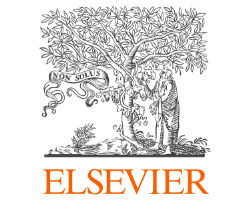Narrative Review: Type 2 Diabetes Causes
Abstract
Indonesia is seventh rank from 10 countries with the highest diabetic patients based on the International Diabetes Federation in 2020. One of the research result shows that women have higher risk type 2 diabetes (T2D) than men, because there is difference in body tissues where women have more adipose tissue. The purpose of this literature review is to analyze genetic factors who caused T2D. This literature research uses a narrative review design. The keywords to search the article are type 2 diabetes, type 2 diabetes factors, genetic type 2 diabetes, and factors that affect type 2 diabetes. The conclusions of causes of T2D are heredity, obesity, age, gender, education, lifestyle, food, stress, socio economic status and physical activity.
Downloads
References
A. T. Gregory and A. R. Denniss, “An Introduction to Writing Narrative and Systematic Reviews — Tasks, Tips and Traps for Aspiring Authors,” Hear. Lung Circ., vol. 27, no. 7, pp. 893–898, 2018.
E. G. García-chapa et al., “Epidemiologi Genetik Diabetes Tipe 2 di Mestizos Meksiko,” JBR, vol. 2017, 2017.
D. Prasetyani and Sodikin, “Analisis Faktor Yang Mempengaruhi Kejadian Diabetes Melitus (Dm) Tipe 2,” Anal. Fakt. Yang Mempengaruhi Kejadian Diabetes Miletus Tipe 2,” JTK, vol. 2, no. 2, pp. 1–9, 2017.
P. P. E. Adiana and N. L. Karmini, “Pengaruh Pendapatan, Jumlah Anggota Keluarga, dan Pendidikan Terhadap Pola Konsumsi Rumah Tangga Miskin Di Kecamatan Gianyar,” J. Nutr. Coll., vol. 1, no. 2, pp. 1–60, 2012.
A. Rika Meldy Agustina, Noor Diani, “Nusantara Medical Science Journal,” vol. 4, no. 1, pp. 14–18, 2019.
V. Lyssenko et al., “Clinical Risk Factors, DNA Variants, and the Development of Type 2 Diabetes,” N. Engl. J. Med., vol. 359, no. 21, pp. 2220–2232, 2008.
G. W. John S. Kekenusa, Budi T. Ratag, “Analisis Hubungan Antara Umur dan Riwayat Keluarga Menderita Dm dengan Kejadian Penyakit Dalam Blu Rsup Prof. Dr. R.D Kondou Manado,” JRT, vol. 1, p. 6, 2013.
R. Riyanto, “Faktor Risiko Keturunan Diabetes dengan Variabel Perancunya Meningkatkan Prevalensi Diabetes Tipe 2 (Studi Estimasi),” J. Kesehat. Metro Sai Wawai, vol. 10, no. 2, pp. 109–118, 2017.
S. A. Soelistijo, “Konsensus Pengelolaan Dan Pencegahan Diabetes Melitus Tipe 2 Di Indonesia 2015 J,” Kesehat. Metro Sai Wawai, vol. 18, no. 1, 2015.
B. Smeltzer, B. Bare, S. Suddaarth, “Textbook of Medical-Surgical Nursing,” JMP, vol. 14, 2008.
R. Betteng, D. Pangemanan, and N. Mayulu, “Analisis Faktor Resiko Penyebab Terjadinya Diabetes Melitus Tipe 2 Pada Wanita Usia Produktif Dipuskesmas Wawonasa,” J. e-Biomedik, vol. 2, no. 2, pp. 404–412, 2014.
F. Emawati, M. Muherdiyantiningsih, R. Effendi, and S. Herman, “Profil Distribusi Lemak Tubuh dan Lemak Darah Dewasa Gemuk di Perdesaan dan Perkantoran,” JRD, vol. 4, no.1, pp. 1–9, 2004.
B. Thorand et al., “Sex differences in the prediction of type 2 diabetes by inflammatory markers: Results from the MONICA/KORA Augsburg case-cohort study, 1984-2002,” Diabetes Care, vol. 30, no. 4, pp. 854–860, 2007.
C. V. J. and J. W. L Webber, C Hill, J Saxton, “Eating behaviour and weight in children,” Int. J. Obes., vol. 33, no. 1, pp. 21–28, 2009.
W. Dyah, Retnaningtyas, and F. Ibnu, “Faktor risiko timbulnya diabetes mellitus pada remaja SMU,” J. Ners, vol. 7, no. 77, pp. 37–46, 2007.
E. Teixeira-Lemos, S. Nunes, F. Teixeira, and F. Reis, “Regular physical exercise training assists in preventing type 2 diabetes development: Focus on its antioxidant and anti- inflammatory properties,” Cardiovasc. Diabetol, vol. 10, no. 12, pp. 1–15, 2011.
M. Brod, J. H. Kongsø, S. Lessard, and T. L. Christensen, “Psychological insulin resistance: Patient beliefs and implications for diabetes management,” Qual. Life Res., vol. 18, no. 1, pp. 23–32, 2009.
R. J. Keith et al., “Tobacco use, insulin resistance, and risk of type 2 diabetes: Results from the multi-ethnic study of atherosclerosis,” PLoS One, vol. 11, no. 6, pp. 1–15, 2016.
D. C. Greenwood et al., “Association between sugar-sweetened and artificially sweetened soft drinks and type 2 diabetes: Systematic review and dose-response meta-analysis of prospective studies,” Br. J. Nutr., vol. 112, no. 5, pp. 725–734, 2014.
H. Kolb and S. Martin, “Environmental/lifestyle factors in the pathogenesis and prevention of type 2 diabetes,” BMC Med., vol. 15, no. 1, pp. 1–11, 2017.
M. Novak, L. Björck, K. W. Giang, C. Heden-Ståhl, L. Wilhelmsen, and A. Rosengren, “Perceived stress and incidence of Type 2 diabetes: A 35-year follow-up study of middle-aged Swedish men,” Diabet. Med., vol. 30, no. 1, pp. 8–16, 2013.
T. Khambaty, C. M. Callahan, A. J. Perkins, and J. C. Stewart, “Depression and Anxiety Screens as Simultaneous Predictors of 10-Year Incidence of Diabetes Mellitus in Older Adults in Primary Care,” J. Am. Geriatr. Soc., vol. 65, no. 2, pp. 294–300, 2017.
S. Stringhini, P. Zaninotto, M. Kumari, M. Kivimäki, and G. D. Batty, “Lifecourse socioeconomic status and type 2 diabetes: The role of chronic inflammation in the English Longitudinal Study of Ageing,” Sci. Rep., vol. 6, no. March, pp. 1–6, 2016.
E. D. Williams, R. J. Tapp, D. J. Magliano, J. E. Shaw, P. Z. Zimmet, and B. F. Oldenburg, “Health behaviours, socioeconomic status and diabetes incidence: The Australian Diabetes Obesity and Lifestyle Study (AusDiab),” Diabetologia, vol. 53, no. 12, pp. 2538–2545, 2010.
S. R. Colberg, “Exercise and type 2 diabetes: The American College of Sports Medicine and the American Diabetes Association: Joint position statement,” Diabetes Care, vol. 33, no. 12, pp. e147–e167, 2010.




















